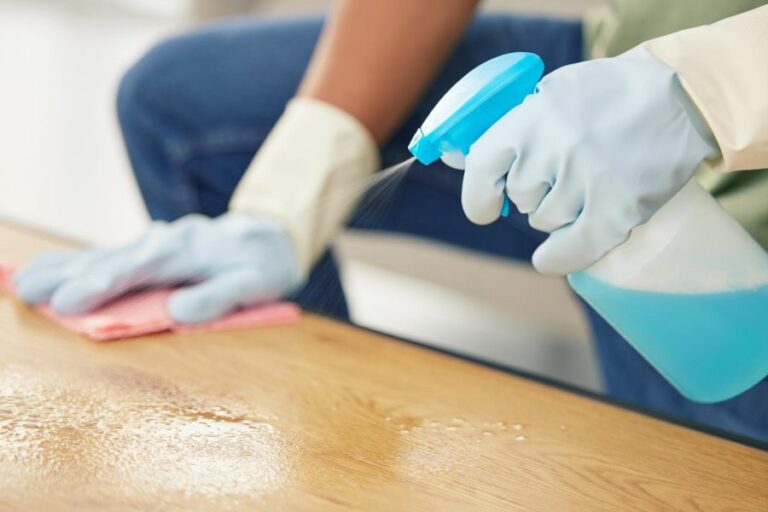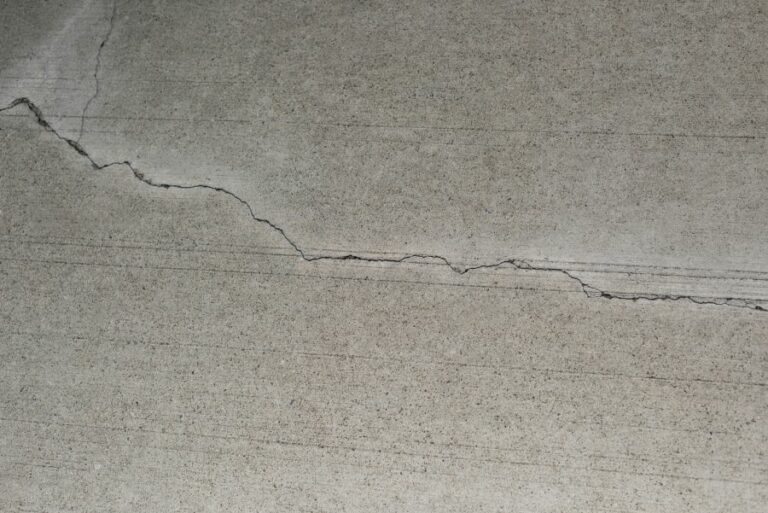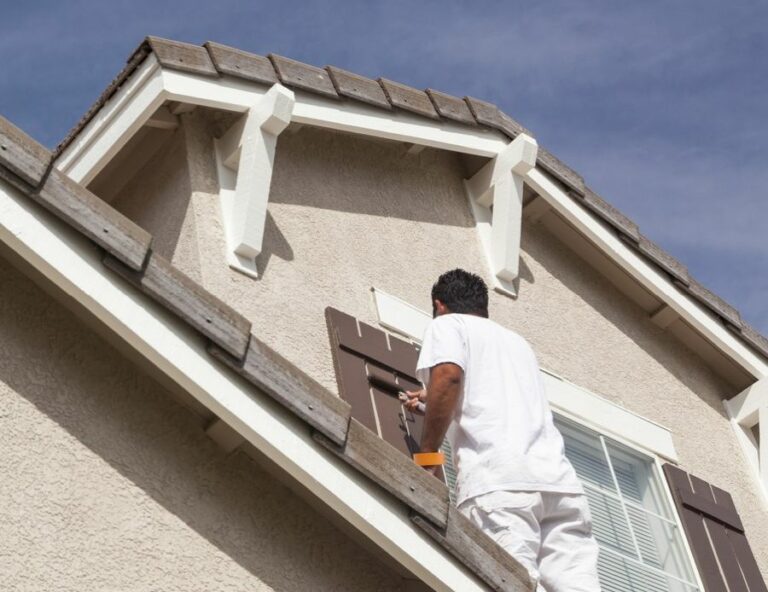Mastering Paint Perfection: Caulk And Seal. What Pros Say
As you embark on your painting journey, it’s essential to have a solid understanding of how to achieve paint perfection by utilizing caulk and seal. But worry not, as we are here to guide you through this process, ensuring your paint projects look professional and polished.
Mastering paint perfection: caulk and seal:
Achieving paint perfection involves proper caulking and sealing. These processes create a professional, long-lasting result, improve energy efficiency, protect from moisture damage, create smooth surfaces, prevent mold and mildew growth, and enhance durability. Choose the correct caulk and sealer for the project, and follow the manufacturer’s application instructions for optimal results.

Discover the secrets to achieving flawless paintwork with our expert guide to caulking and sealing. You’ll learn essential techniques and best practices to give your space a professional touch. So, why wait? Read on and master paint perfection!
Contents
- 1 Achieving Flawless Paint Results: Caulking & Sealing
- 2 Caulk Choices: Pro’s Preferred Products for Painting
- 3 Attaining Sharp Lines with Precise Caulk Application
- 4 Expert Caulking Techniques for a Polished Finish
- 5 Comparing Painters’ Caulk with Standard Caulking Options
Achieving Flawless Paint Results: Caulking & Sealing
• Understanding the Importance of Caulking and Sealing
When it comes to achieving paint perfection, the importance of proper caulking and sealing cannot be overstated. These processes are essential in creating a professional, long-lasting paint job that looks great and stands the test of time. Caulking and sealing provide numerous benefits, including:
- Improved energy efficiency
- Protection from moisture damage
- Smoother, more uniform paint surfaces
- Prevention of mold and mildew growth
- The enhanced durability of painted surfaces
By taking the time to learn and apply the techniques involved in caulking and sealing, you are setting the stage for paint perfection.
• Choosing the Right Caulk for Your Project
Selecting the proper caulk for your paint project is crucial for optimal results. There are numerous types of caulk available on the market, each designed for specific applications and circumstances. Some of the most commonly used caulking materials include:
– Acrylic Latex Caulk
Acrylic latex caulk is an excellent general-purpose caulk often used for filling cracks, joints, and gaps. It is suitable for both interior and exterior applications and is compatible with many materials, including wood, metal, and masonry.
While acrylic latex caulk is paintable, it tends to shrink and accumulate dust, making it less ideal for exposed areas.
– Siliconized Acrylic Caulk
Siliconized acrylic caulk combines the benefits of acrylic latex caulk with the added durability and flexibility of silicone caulk.
This hybrid material offers superior adhesion, excellent for sealing cracks and gaps in doors, windows, and trim. It is paintable but requires a longer drying time than traditional acrylic caulk.
– Silicone Caulk
Silicone caulk is a high-performance material that provides a nearly unbeatable level of durability, flexibility, and water resistance. It is ideal for use in wet environments, such as bathrooms and kitchens, as well as for sealing around doors and windows.
However, silicone caulk is not paintable, making it better suited for use in areas where the caulk line will not be painted or can be concealed.
To choose the right caulk for your project, consider the specific requirements of the job and the nature of the materials involved. Be sure to consult the caulk manufacturer’s instructions for guidance on compatibility, application techniques, and cure times.
– Applying Caulk for Optimal Results
Proper application of caulk is essential for achieving paint perfection. Follow these tips to ensure a neat, professional finish:
- Clean the surface: Before applying caulk, thoroughly clean the surface to remove dirt, debris, and old caulk. This helps ensure optimal adhesion and a smooth, uniform finish.
- Use a high-quality caulk gun: Invest in a high-quality caulk gun with a smooth, consistent pressure mechanism. This will help you maintain control over the flow of caulk and achieve an even application.
- Cut the nozzle at an angle: When cutting the caulk tube’s nozzle, make sure to create an angled opening that matches the width of the gap you are filling. This will help you achieve a cleaner, more precise bead of caulk.
- Apply steady pressure: As you apply the caulk, maintain steady pressure on the gun to ensure a consistent flow. Move the nozzle smoothly along the gap, ensuring full coverage without overfilling.
- Tool the caulk: Immediately after applying the caulk, use a wet finger or a damp cloth to smooth the bead and press it into the gap. This will remove excess caulk, level the surface, and ensure proper adhesion.
- Allow sufficient drying time: Follow the manufacturer’s instructions to determine the appropriate drying time before painting over the caulk. Rushing this step can result in cracks, splitting, or uneven paint application.
• Importance of Sealing in Paint Perfection
Sealing is another essential component of paint perfection, especially for exterior painting projects. Sealing serves to:
- Protect surfaces from moisture infiltration
- Prevent paint from blistering, peeling, or flaking
- Enhance the paint’s adhesion to the surface
– Choosing the Right Sealer
Selecting the appropriate sealer for your project depends on the material you are working with and the specific requirements of the job. Some of the most commonly used sealers include:
- Primer sealers: These are ideal for porous surfaces, such as new drywall or raw wood. Primer sealers help to prevent uneven paint absorption and provide a smooth, even surface for paint to adhere to.
- Waterproofing sealers: Waterproofing sealers are typically used on exterior surfaces where water infiltration may be a concern, such as concrete or masonry. These products create a barrier that repels moisture and can protect surfaces against damaging freeze-thaw cycles.
- Stain-blocking sealers: Stain-blocking sealers are formulated to prevent the migration of stains or tannins from the substrate through the paint. This type of sealer is useful when painting over knots in wood or stains from water damage.
When choosing a sealer, consult the manufacturer’s instructions and recommendations to ensure the product is suitable for your specific project.
– Proper Sealing Techniques
- Clean the surface: Before applying a sealer, thoroughly clean the surface to remove dirt, debris, and old paint or sealant. This helps ensure optimal adhesion and a smooth, uniform finish.
- Apply the sealer with a brush or roller: Depending on the material and the size of the area being sealed, use an appropriate brush or roller to apply the sealer evenly and thoroughly.
- Allow the sealer to dry completely: Follow the manufacturer’s instructions for drying time, and avoid painting or applying additional coats until the sealer is fully cured.
– Final Thoughts
Mastering paint perfection requires patience, attention to detail, and an understanding of the importance of proper caulking and sealing.
By choosing the right materials and employing the most effective techniques, you will be well on your way to achieving a professional-quality paint job that looks great and lasts for years to come.
Caulk Choices: Pro’s Preferred Products for Painting
Caulk is an essential part of any painter’s toolkit. It can help create a seamless and professional finish, as well as protect various surfaces from moisture and other potential damage.
With many different types of caulk on the market, which one is the best for professional painters?
– Acrylic Latex Caulk: A Versatile Choice
One of the most popular types of caulk among professional painters is acrylic latex caulk. This water-based sealant is easy to work with and offers good adhesion to a variety of surfaces, such as wood, drywall, and masonry.
Additionally, acrylic latex caulk is paintable and can be easily cleaned up with water, making it an excellent choice for a range of applications.
Pros:
- Easy to apply and work with
- Good adhesion to various surfaces
- Paintable
- Easy cleanup with water
- Flexible and crack-resistant
Cons:
- Not ideal for areas exposed to high amounts of moisture
- May not last as long as other types of caulk
The Painting and Decorating Contractors of America (PDCA) recommends acrylic latex caulk for its versatility and ease of use. Although it may not be as durable in high-moisture areas as other types, it remains a trusted choice for many professional painters.
– Silicone Caulk: Superior Protection Against Moisture
When moisture resistance is a top priority, professional painters often turn to silicone caulk. This type of sealant is ideal for use in areas such as bathrooms, kitchens, and other high-moisture environments. Silicone caulk offers excellent adhesion and remains flexible, even in extreme temperatures.
Pros:
- Superior moisture resistance
- Excellent adhesion
- Flexible, even in extreme temperatures
- Long-lasting
- Resistant to mildew and mold
Cons:
- Not paintable
- Difficult to clean up (requires a special solvent)
Despite its drawbacks, silicone caulk’s durability and performance in high-moisture areas make it a top choice for many painting projects. Just keep in mind that it may not be suitable for areas that require painting.
– Elastomeric Caulk: Long-lasting and Flexible
For a long-lasting and supremely flexible caulk option, professional painters often opt for elastomeric caulk. This type of sealant offers exceptional adhesion and can stretch up to 600% of its original size, making it ideal for areas with movement, such as doors and windows.
Pros:
- Exceptional adhesion
- Highly flexible
- Can stretch up to 600% of its original size
- Long-lasting
- Low shrinkage
Cons:
- May be more expensive than other caulks
- Can sometimes be difficult to apply
While elastomeric caulk may come with a higher price tag and some challenges in the application, its long-lasting flexibility makes it a worthwhile investment for many professional painters.
– Hybrid Caulk: Combining the Best Features
Some professional painters prefer the versatility of hybrid caulk, which combines the properties of both latex and silicone sealants.
This type of caulk offers excellent adhesion, flexibility, and moisture resistance, making it suitable for a range of applications.
Pros:
- Combines benefits of latex and silicone caulk
- Good adhesion
- Long-lasting
- Moisture and mildew resistant
- Paintable
Cons:
- May be more expensive than other caulk types
- Limited availability, as it is a newer product
For those looking for the best of both worlds, hybrid caulk is a top choice. Although it may be harder to find and can be more expensive than other options, its combined benefits make it a valuable addition to a professional painter’s toolkit.
• In Conclusion: Find the Right Caulk for Your Project
Selecting the right type of caulk for your painting project is essential for achieving a professional finish.
Whether you require the versatility of acrylic latex caulk, the moisture resistance of silicone caulk, the flexibility of elastomeric caulk, or the combined benefits of hybrid caulk, understanding the advantages and disadvantages of each type will help you make an informed decision.
By taking the time to research the properties and benefits of each type of caulk, you can ensure a high-quality, long-lasting finish for your painting project that meets the standards of professional painters.
Attaining Sharp Lines with Precise Caulk Application
Achieving crisp lines when painting caulking is essential for a professional-looking finish.
• Selecting the Suitable Caulking Product
For a crisp and clean finish, it is necessary to choose the appropriate type of caulking product. Select a paintable caulking formula specifically designed for your intended application.
This would ensure seamless bonding with the paint, resulting in a flawless appearance. Paintable caulking products are readily available from most hardware stores, and they usually include a label that specifies the product as ‘paintable.’
• Proper Application of Caulking
The key to achieving sharp lines is applying caulking with precision. Consider these tips to improve your caulking application:
– Use the Correct Size of Caulking Beads
Deploy a consistent bead size by holding the caulking gun at a 45-degree angle and keeping a steady pressure while applying. A continuous motion along the joint helps prevent uneven beads or gaps in the sealant.
– Employ the Smoothing Technique
After laying the caulking bead, smooth it out using a caulking tool, a wet finger, or a damp cloth for an even, level finish. A perfectly leveled layer of caulking helps prevent paint from pooling or bleeding, resulting in a crisp line.
– Clean Up Excess Caulking
Always have a damp cloth handy while working to wipe away excess caulking immediately. Removing any surplus product prevents buildup and reduces the likelihood of paint bleed-through.
• Preparing the Surface
To ensure crisp, clean lines when painting caulking, it is crucial to adequately prepare the surface. Here are the essential steps in surface preparation:
– Clean the Surface
Before applying caulking and paint, ensure the surface is clean, dry, and free of any dust or debris. A clean surface not only aids in adhesion but also reduces the chances of paint bleed-through.
– Use of Painter’s Tape
For clean, sharp lines, using painter’s tape is a must. The tape should be applied close to the edges of the joints where caulking will be applied. Make sure the tape adheres well to the surface and there are no gaps or bubbles.
Ensure you remove the tape promptly after painting to prevent peeling or tearing. Always pull the tape back on itself while holding it at a 45-degree angle for best results.
• Selecting the Right Paint and Primer
Using high-quality paint and primer will help minimize paint bleed-through and create crisp edges when painting caulking.
– Priming the Surface
Applying a quality primer to the surface before painting not only enhances adhesion but also helps achieve a consistent, even finish. Moreover, it can prevent colors from bleeding through the caulking.
– Choose Quality Paint
Investing in high-quality paint helps ensure sharp lines and a seamless finish when painting caulking. Look for paints with good coverage and color consistency to prevent bleed-through.
• Painting Technique for Crisp Lines
The final and most crucial step in achieving crisp lines is the actual painting process.
– Use a Brush for Edges
To obtain clean edges, use a fine-bristled, high-quality brush. While rollers are excellent for large surfaces, a brush provides the required precision when painting close to the edges of caulking joints.
– Lightly Feather the Paint
To prevent buildup or bleeding, lightly feather the paint around the caulking joints. Ensure even paint distribution and avoid applying too much at once.
– Paint in the direction of the Caulking Joint
For the best appearance, paint in the direction of the caulking joint rather than perpendicular to it. This helps give your paint lines a professional and seamless look.
• Recap of Recommendations for Crisp Caulking Lines
- Choose a suitable, paintable caulking product.
- Apply the caulk consistently and accurately.
- Properly prepare the surface before applying caulking and paint.
- Use high-quality paint and primer.
- Employ the appropriate painting technique.
By following these expert tips and recommendations, you can achieve crisp and clean caulking lines in your painting project. For more helpful information on painting techniques and best practices, visit The DIY Homeowner Guide by This Old House.
Step | Description |
|---|---|
1 | Clean and prep the surface by removing any dirt, dust, or debris. |
2 | Apply painter’s tape to both sides of the area that needs to be caulked, ensuring straight lines and even spacing. |
3 | Apply the caulk smoothly and evenly along the seam, filling the gap between the painter’s tape. |
4 | Use a dampened finger, caulk tool or sponge to smooth out the caulk line and create a clean, even bead. |
5 | While the caulk is still wet, carefully remove the painter’s tape, pulling it away at a 45-degree angle to reveal a clean, crisp line. |
6 | Allow the caulk to dry fully according to the manufacturer’s instructions before painting or exposing it to water or humidity. |
Expert Caulking Techniques for a Polished Finish
Caulking is an essential skill for homeowners, DIY enthusiasts, and professionals alike. It helps seal gaps, enhance the appearance of surfaces, and reduce energy costs.
Making your caulking look professional is not as difficult as it may seem. With the right tools, techniques, and attention to detail, you can achieve flawless results every time.
• Choosing the Right Caulk
The first step to achieving a professional finish is to select the appropriate caulk for the job. The material, type, and color of the caulk should match the needs of your project.
- Material: Common caulk materials include silicone, latex, and various specialty options. Silicone is great for wet environments and areas exposed to extreme temperatures. Latex is easier to work with and suitable for indoor applications such as baseboards and crown moldings.
- Type: Caulks come in different types, such as sanded, unsanded, and paintable versions. Choose a type that suits the specific requirements of your project to ensure a professional result.
- Color: Matching the color of the caulk to the surrounding area will create a seamless and polished appearance. Custom color options are also available, which allows you to get a perfect match for your project.
• Tools and Preparation
Having the proper tools and preparing the area are crucial steps toward achieving a professional caulking job. Gather the following items before you begin:
- High-quality caulking gun: A dripless caulking gun will provide a smoother application and prevent excess caulk from being wasted.
- Sharp utility knife: To open the caulk tube and remove old caulking if necessary.
- A small, damp sponge or cloth: For smoothing and cleaning up excess caulk.
- Painter’s tape: To mask adjacent surfaces and create clean, straight lines.
- Paper towels or rags: To wipe your tools and clean up spills as needed.
Before applying the new caulk, clean the surface thoroughly, removing any dirt, dust, grease, or old caulk. Use a utility knife or putty knife to remove existing caulk, and ensure the area is dry before proceeding.
• Proper Application Techniques
Follow these techniques for a smooth, professional-looking caulk line:
- Cut the tip: Trim the nozzle of the caulk tube at a 45-degree angle. The opening should correlate to the desired bead size, so start with a smaller cut, test it, and adjust if needed.
- Load the caulking gun: Insert the caulk tube into the gun, ensuring the nozzle is facing forward. Release the plunger and push it firmly against the back of the tube.
- Apply steady pressure: Squeeze the trigger of the gun while keeping a consistent speed and angle. Move the gun along the seam, leaving an even bead of caulk.
- Smooth the bead: After applying a section of caulk, smooth it out with your finger or a damp sponge. This will ensure the caulk adheres to both surfaces and create a uniform appearance. Remember to clean your finger or sponge frequently to avoid spreading excess caulk.
- Remove the tape: While the caulk is still wet, carefully peel off the painter’s tape to ensure clean, straight lines.
- Inspect and touch up: Examine your work and touch up any spots that need more caulk or smoothing.
- Clean up: Use paper towels or rags to clean up spills and excess caulk from your tools.
• Curing and Post-Application Cleaning
Allow the caulk to cure for the recommended time specified on the product label. Curing times vary depending on the caulk type and environmental factors such as temperature and humidity. During this time, ensure the area remains undisturbed to prevent flaws in the finish.
Once the caulk is fully cured, check for any additional touch-ups needed. If any residue or stains are left, use a gentle cleaning solution and a soft cloth to care for the surrounding surfaces.
• Final Thoughts
Making caulking look professional is achievable by following the steps and techniques outlined in this article.
By choosing the appropriate caulk, preparing the area, using proper application techniques, and allowing the caulk to cure, you can ensure a seamless and polished finish.
Always practice caution and adhere to the manufacturer’s guidelines when working with caulking products.
Step | Description |
|---|---|
1 | Clean the surface: Ensure the area where you will be applying the caulk is clean and free of dirt, debris, and old caulk. |
2 | Choose the right caulk: Select a high-quality caulk that is appropriate for the materials and conditions of the project. |
3 | Prepare the caulk gun: Cut the tip of the caulk tube at a 45-degree angle and puncture the inner seal. Load the tube into a caulk gun. |
4 | Apply the caulk: Hold the caulk gun at a 45-degree angle and apply steady pressure, moving along the seam while applying an even bead of caulk. |
5 | Tool the caulk: Within a few minutes, use a wet finger, a caulk finishing tool, or a damp sponge to smooth and shape the caulk bead, ensuring it adheres well to both surfaces and creates a neat finish. |
6 | Clean up excess caulk: Remove any excess caulk with a damp cloth or sponge before it dries. |
7 | Allow the caulk to dry: Follow the manufacturer’s instructions for drying time before painting or exposing the caulk to water or moisture. |
Comparing Painters’ Caulk with Standard Caulking Options
Caulking is an essential step in many home improvement and construction projects. The purpose of caulking is to seal joints or cracks, thereby preventing moisture, air, and other contaminants from entering those areas.
There are many different types of caulk available, each with its own specific purpose and recommended applications.
• Characteristics of Painter’s Caulk
Painter’s caulk, also commonly referred to as painter’s acrylic latex caulk, is specifically formulated for use on interior and exterior surfaces that will eventually require painting. Some key features of painter’s caulk include:
– Fast Drying Time
Painter’s caulk typically dries quickly, usually within one to three hours, which enables it to be painted over more rapidly than other types of caulk.
– Paintability
As the name suggests, the painter’s caulk is specifically designed to be painted over. It has excellent adhesion to both latex and oil-based paints.
Additionally, the painter’s caulk often remains flexible even after being painted, which helps minimize cracking and ensures that the caulk-and-paint combination remains durable over time.
– Easy Application and Cleanup
Painter’s caulk is known for its ease of use. It has a smooth, pliable consistency that makes it easy to work with, even for inexperienced DIYers.
Moreover, this type of caulk is water-based, which makes cleaning up tools and surfaces a breeze, as it can simply be wiped away with a damp cloth before it dries.
– Limited Sealing Capability
It’s important to note that a painter’s caulk is generally not designed to provide a strong waterproof or airtight seal. This makes it better suited for use around doors, windows, baseboards, and molding, where its primary purpose is aesthetic rather than functional.
For areas that require waterproof or airtight seals, such as bathrooms or kitchens, regular caulk may be a better option.
• Characteristics of Regular Caulk
In contrast to painter’s caulk, regular caulk encompasses a wider range of caulking compounds that vary in their characteristics and applications. Some common types of regular caulk include:
– Silicone Caulk
Silicone caulk is highly flexible and durable and provides excellent resistance to moisture, heat, and cold.
This makes it an ideal choice for sealing areas that are subject to significant temperature fluctuations or areas that require waterproof seals, such as tubs, showers, and sinks in bathrooms, and countertops in kitchens.
However, silicone caulk is not paintable and, therefore, unsuitable for use on surfaces requiring painting.
– Polyurethane Caulk
Polyurethane caulk is a high-performance caulk that offers excellent adhesion and flexibility, as well as resistance to moisture, UV light, and temperature fluctuations.
It is often used for exterior applications, such as sealing expansion joints in sidewalks, driveways, and other masonry surfaces. Like silicone caulk, polyurethane caulk is not paintable.
– Latex Caulk
Latex caulk is a versatile, general-purpose caulk that can be used for a wide range of interior and exterior applications. It is easy to apply, paintable, and can be cleaned up with water.
However, it is less flexible and less resistant to moisture than silicone caulk, making it less suitable for areas that require waterproof seals.
• Recommendations for Using Painter’s Caulk and Regular Caulk
Based on the characteristics and applications of painter’s caulk and regular caulk, here are some recommendations to help you choose the right type of caulk for your project:
- Use painter’s caulk for sealing gaps and cracks around windows, doors, baseboards, and molding, where paintability is a priority and a strong waterproof or airtight seal is not necessary.
- Use silicone, polyurethane, or other types of regular caulk for sealing areas that require waterproof or airtight seals, such as around tubs, showers, sinks, and countertops. Keep in mind that these types of caulk generally cannot be painted over, so they may not be suitable for use in areas that require painting.
- For a more general-purpose, paintable option, opt for latex caulk, but be aware that it may not provide as strong a seal or as much flexibility as silicone or polyurethane caulk.
By understanding the distinct characteristics and applications of painter’s caulk and regular caulk, you can ensure that you choose the right type of caulk for your specific project.
To learn more about the various types of caulk available and their recommended applications, consult resources such as the U.S. Department of Energy or your local home improvement store.
Features | Painters Caulk | Regular Caulk |
|---|---|---|
Purpose | Specifically designed for filling gaps and cracks before painting | Sealing gaps, joints, and cracks, often with added water-resistant or adhesive properties |
Paintability | Designed to be painted over with ease | Not all types can be painted over, may require specific types of paint |
Flexibility | Less flexible, meant for areas with minimal movement | Varies, some types offer greater flexibility for areas with more movement or expansion |
Drying Time | Generally dries quickly, allowing for fast painting | Drying times vary; some may take longer to set, especially in damp environments |
Water Resistance | Lower water resistance, not ideal for areas exposed to moisture | Some types are specifically designed to be water-resistant or waterproof |
Common Uses | Prepping surfaces for painting, filling gaps and cracks between moldings, baseboards, and walls | Sealing areas exposed to moisture, such as kitchens, bathrooms, windows, and doors; bonding materials |







